Every great elopement photo starts with a clear vision of how you want the day to look and feel. In fact, photographer Andrea Doss defines your “elopement vision” as “all the pieces of your day that sum up how you want your elopement to look and feel, and the overall vibe you want to express”. To capture the perfect mood, start by brainstorming the vibe that feels most you. Sit down with your partner and describe the ideal atmosphere – is it cozy and romantic, wild and adventurous, or bright and joyful? Caitlin Wilder, an elopement planner, recommends even choosing three words to define your vibe (e.g. “gentle, cozy, romantic” or “joyful, playful, relaxed”). This becomes your North Star when planning: every choice from location to music should support those key adjectives.
Next, gather inspiration visually. Create a mood board (physical or digital) full of images, colors, and ideas that capture the feeling you want. As Wilder explains, getting clear on your vision “is the first step to creating a day that truly feels like magic to you”, and a mood board helps you see all your ideas in one place. Pin or download photos of landscapes, outfits, decorations, and activities that match your words. If many of the images on your board share a theme (e.g. beach sunsets, dark moody forests, or bright floral fields), you know you’re honing in on the right vibe. Organize them, remove anything that doesn’t fit, and even note what draws you to each image. You can use tools like Pinterest, Milanote, or even scrap paper – whatever helps you and your partner collaborate.
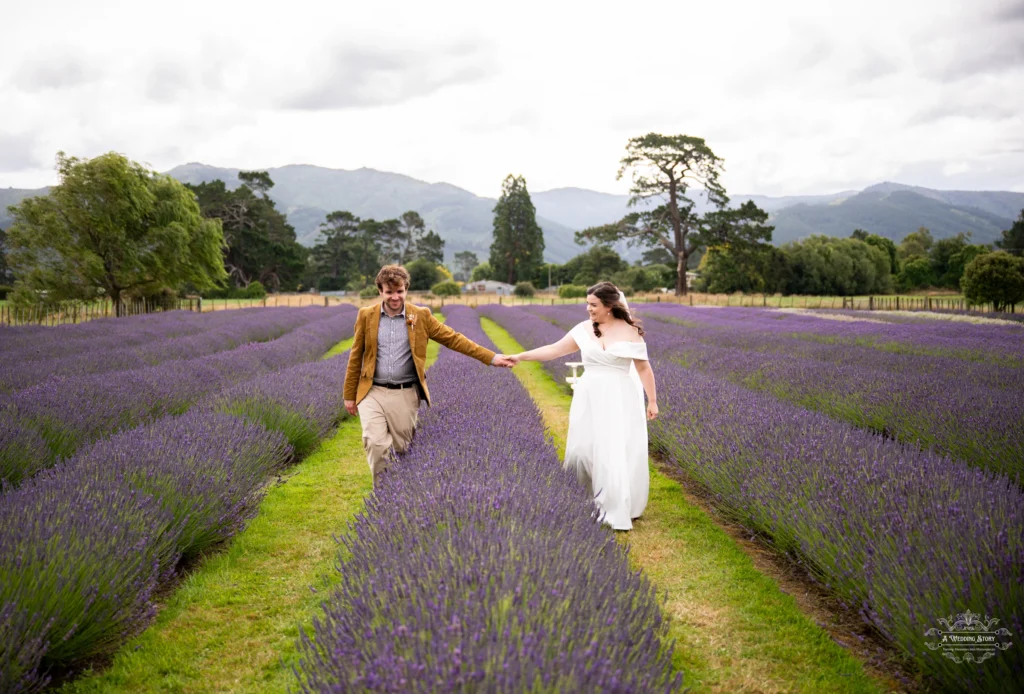
- Reflect on your style and story. What makes you a couple? Incorporate shared hobbies or travels (maybe you love hiking together, or brunch by the lake) into your vision.
- Pick 3 mood words. Examples: adventurous, intimate, ethereal or vintage, colorful, quirky. Use these in searches (e.g. “cozy elopement,” “boho elopement”) to find fitting photos.
- Make a mood board. Collect images of decor, outfits, and venues that match your vibe. Arrange them visually so you can spot patterns (colors, settings, lighting).
- Jot down details. Write a short list for each category (location ideas, outfits, flowers, etc.) that capture your tone. For example: “moody forest, dew-covered ferns, soft morning light” or “sunset on the beach, boho lace dress, warm tones”.
Setting this vision first will guide all your decisions and ensure every element – from dress to décor – works together. It also lets your photographer and vendors understand exactly the feeling you want.
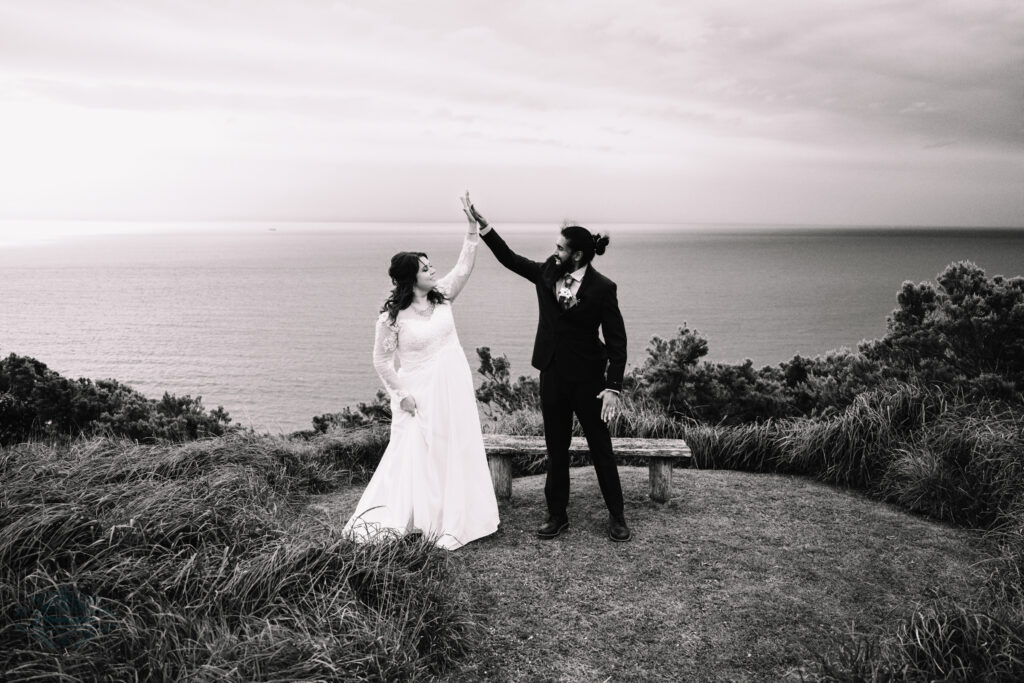
Choose Location, Lighting, and Timing
Once your mood is defined, pick a setting and schedule that reinforce it. The environment and light are powerful mood-setters in photos. Think about what backdrop and time of day best match your vision:
Multi-Day Adventure or Timeline
You don’t have to cram everything into one morning. Some couples elope over a weekend or take a “day after” shoot on a separate day. For example, plan a morning hike to a vista, an afternoon picnic (enjoying each other’s company), and an evening vow ceremony at sunset. This “all day elopement” approach makes your day feel like a true adventure and gives your wedding photographer time to capture a variety of moods (golden, blue hour, etc.).
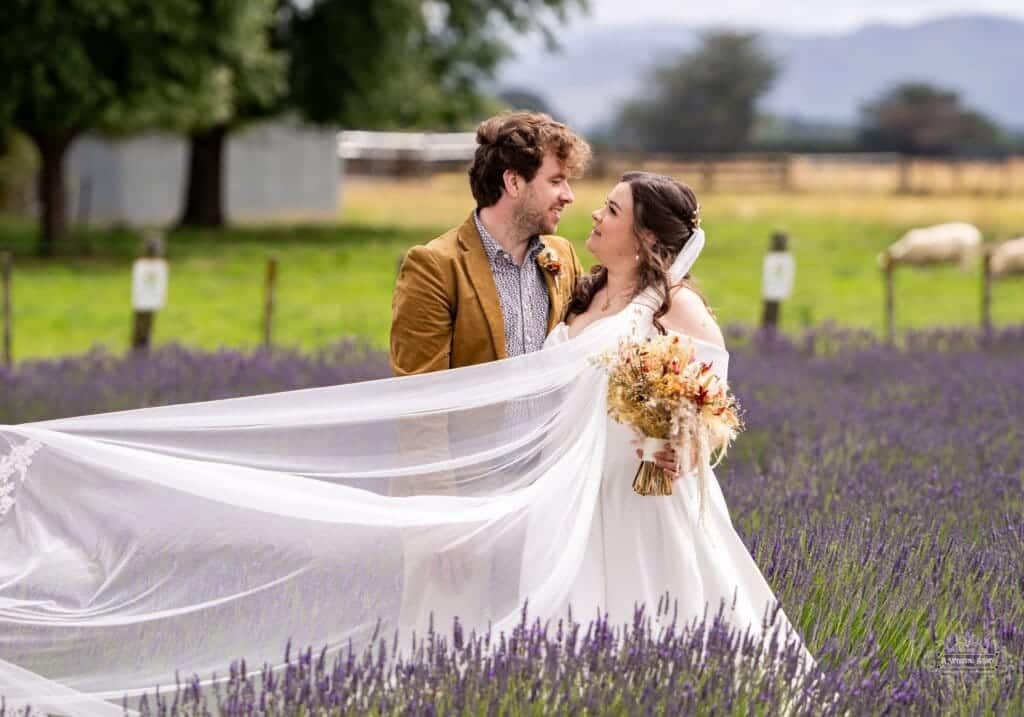
Golden Hour Magic
Many experts stress that lighting sets the mood. The soft glow of sunrise or sunset (the “golden hours”) creates warm, romantic colors and flattering light. For dreamy, intimate vibes, schedule your ceremony or portraits during these times. Bright midday light tends to be harsh and high-contrast – consider if that fits your style (it can suit bold, dramatic moods).
Environment and Weather
Use nature to your advantage. A misty mountain top, a windswept beach, or a cozy forest all have distinct feels. Orion Photo Group advises scouting your location in advance to find the best angles and backdrops. A sweeping landscape makes photos epic and grand; a dense woodland feels intimate and moody. Even cityscapes or old buildings can set a romantic mood if architecture matters to you. If you love spontaneity, even plan for dramatic weather (light rain or fog can make truly unforgettable images).
Season and Climate
Consider how the season affects mood. Spring blossoms or autumn leaves can add warmth and color; winter’s snow brings a quiet, pure feeling. Pack accordingly – a fun tip is to coordinate your outfits and accessories with the season (rich jewel tones in fall, or soft pastels in spring).
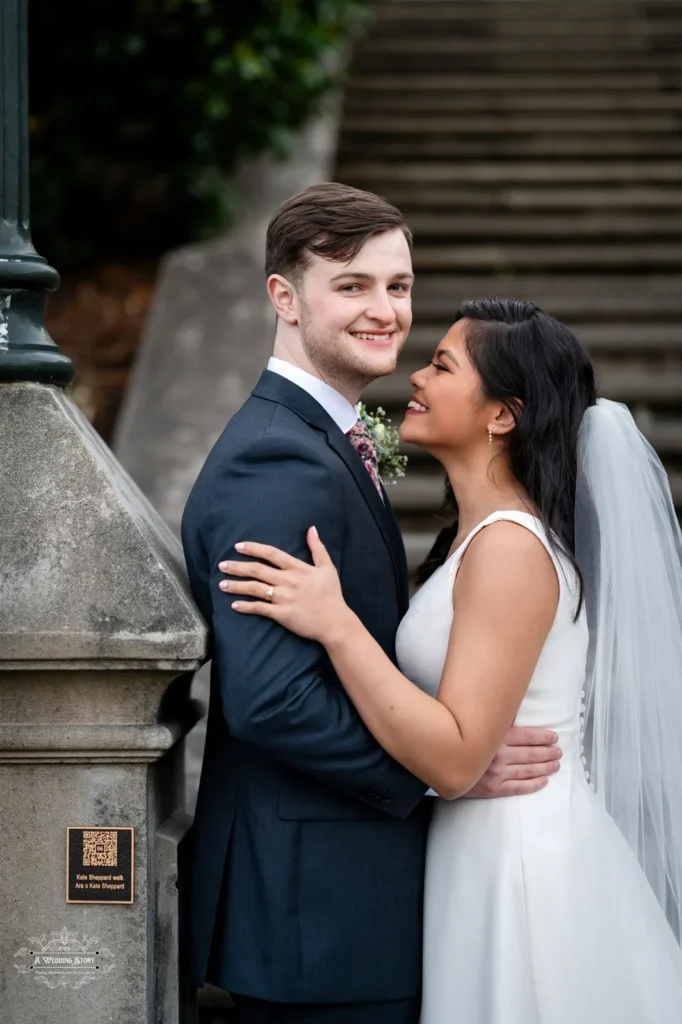
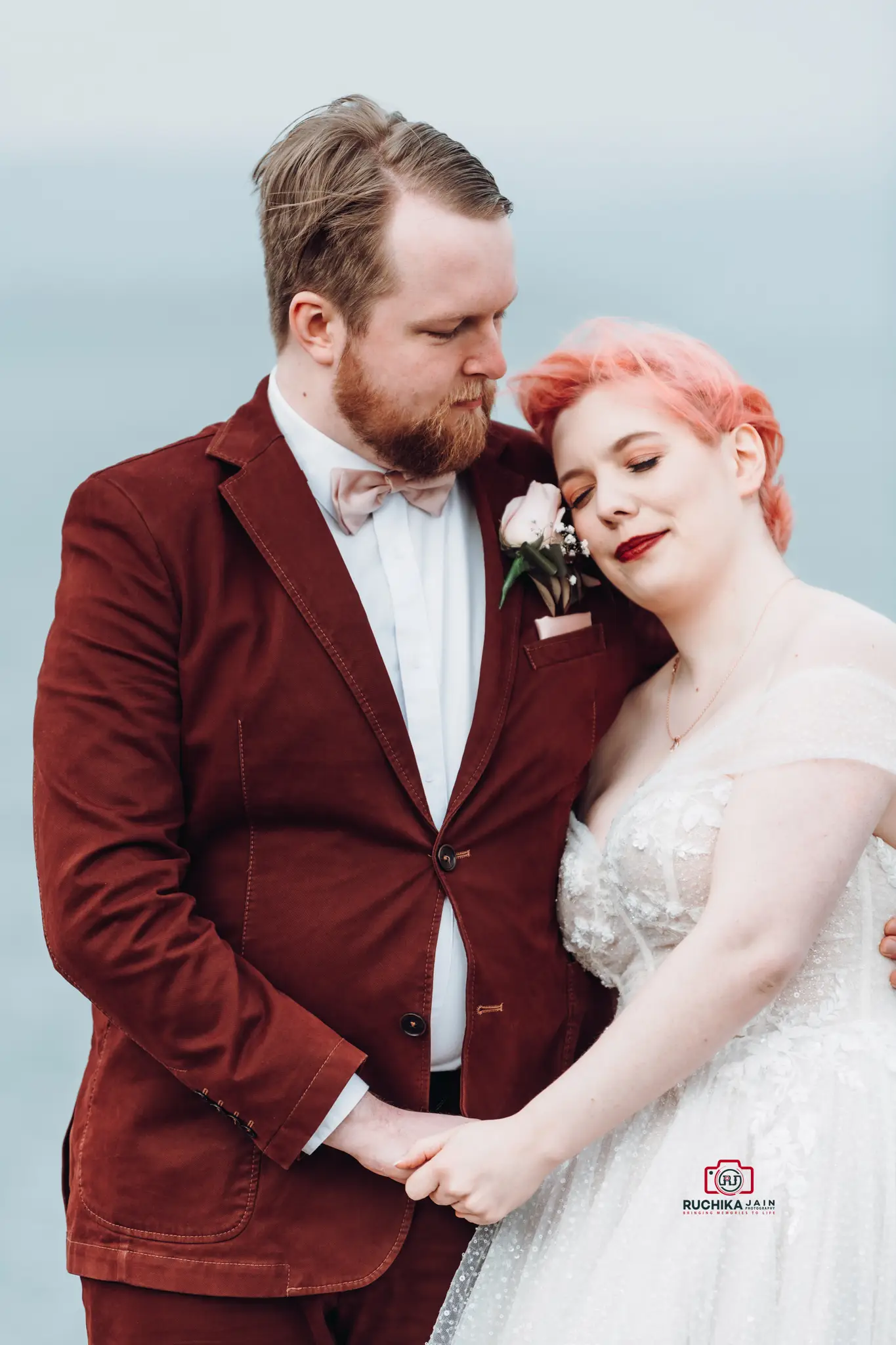

Tips for Location and Light:
- Explore a few options (beach, mountain, forest, urban rooftop) to see which matches your vibe. Trust your gut: if the spot “feels” right, go for it.
- Plan your ceremony/portraits around sunrise or sunset. Even a late-afternoon ceremony can flow into a sunset photo session.
- Check how the light changes during your planned day. For example, if you elope at a waterfall or valley, know if it gets sun or shade at your time. Scouting in advance helps.
- If privacy matters (for a more relaxed mood), choose a secluded spot. If you love city energy, maybe a quiet city overlook.
The choice of setting isn’t just background; it is your mood. A vast, sunlit meadow feels blissfully free, while a twilight forest can feel mystical. Embrace the power of location to transform your photos into storytelling.
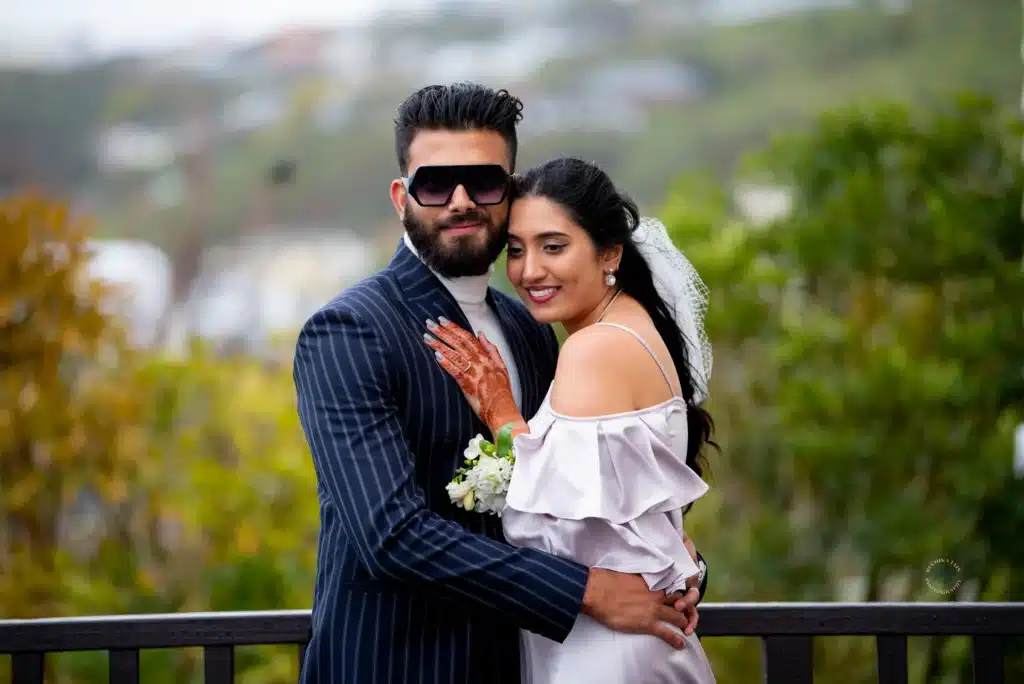
Personalize with Styling and Details
The mood isn’t just in nature – it’s in the details you choose. Thoughtful styling makes photos feel authentic and unique to you:
- Attire and Colors. Pick outfits that match your vibe. For a boho elopement, a flowy lace dress and floral crown work beautifully; for a formal city elopement, a sleek suit and classic gown create an elegant mood. Consider pops of color if you want your photos to look vibrant, or earthy/natural tones for a timeless feel. Even small choices count: a colorful pocket square, a playful bow tie, or custom shoes can subtly reinforce your style. (One fun idea: use a floral pocket square instead of a boutonniere for a unique twist.)
- Floral and Decor. Flowers and decorations should echo your mood. Soft, neutral bouquets (creamy whites, greens) give a dreamy, romantic feel; bright wildflowers or bold succulents add energy and joy. If your elopement is outdoors, maybe a simple flower arch or a sign with your wedding hashtag adds personality. Balance is key – decorations should compliment the natural setting, not overwhelm it.
- Vows and Rituals. Personalized vows, readings, or rituals make the atmosphere deeply emotional. Writing your own vows means those heartfelt words will be caught on camera and remembered forever. Including a parent or friend (e.g., a special first look or role as witness) can heighten meaningful emotion in photos. Some couples even invite a few loved ones to share in an intimate ceremony, which adds warmth and genuine smiles.
- Activities and Props. Think of one or two activities that reflect your relationship: maybe you both love coffee, so start the morning at a café and have the barista snap a pic of you two toasting; or if you met hiking, bring a map or wear matching hiking boots. Even simple props (champagne toast, confetti, a vintage camera) can add fun, candid moments. Shell Creek Photography suggests, for instance, potting a tree or doing any hands-on fun that you enjoy.
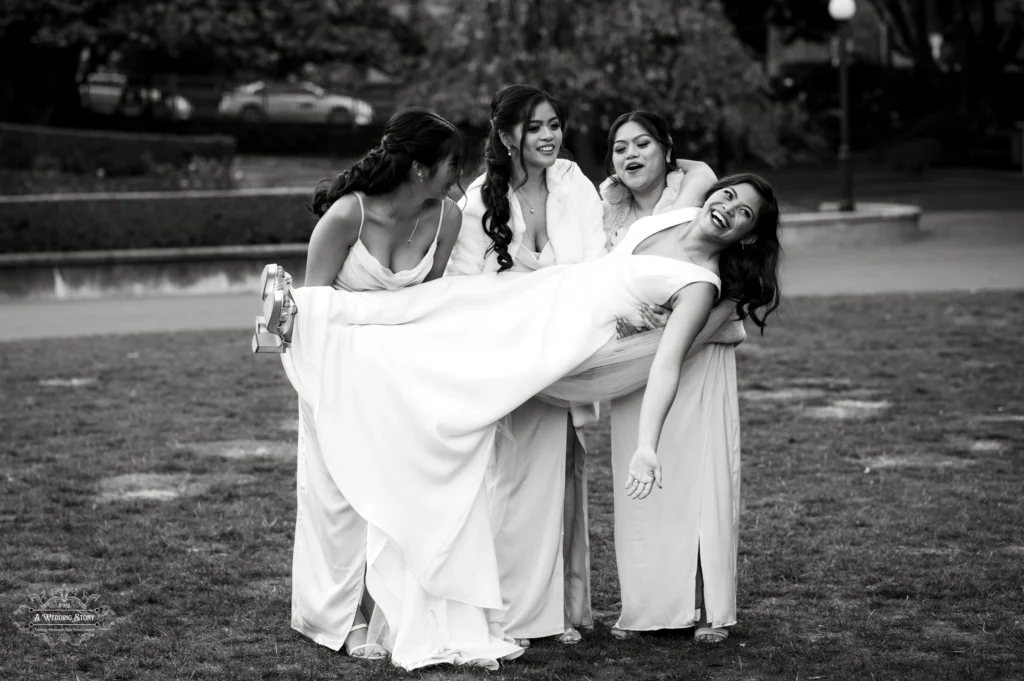
Examples of personal touches:
- Wear a piece of jewelry or heirloom that has meaning.
- Write and exchange surprise gifts (it’s a beautiful candid shot when one opens the other’s present).
- Play your favorite song in the background during your portraits or first dance.
- Skip tradition if it doesn’t fit: no first-look if that feels too staged; instead, walk down “the aisle” towards each other for genuine emotion.
All these details enrich the story behind your photos, making them feel warm and individual. As one photographer notes, modern elopements are about “stripping away the stress” and focusing on what matters: love, connection, and your own unforgettable experience. Every personalized element you add fuels that authentic mood.
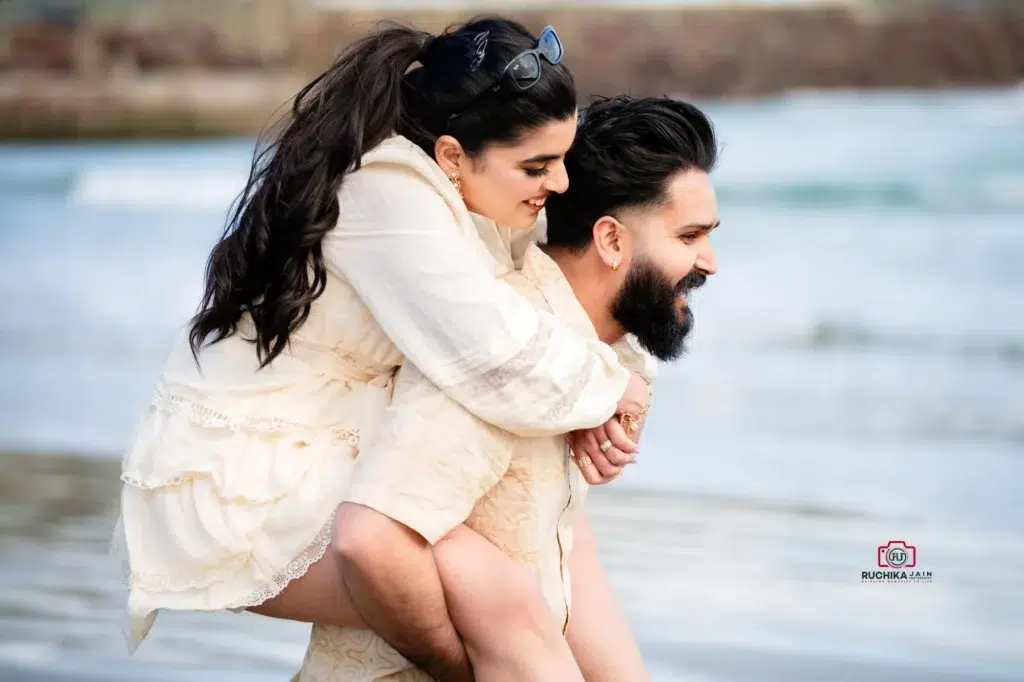
Capture Candid Moments
The best elopement photos often look unposed and genuine. To get that candid, in-love feeling in your gallery, be in the moment together. Black Salt Photography advises couples to focus on each other, not the camera. This means instead of staring awkwardly at the lens, simply interact normally: hold hands, whisper, laugh, or dance together. Your photographer will capture those intimate gestures and looks.
Treat the day like a date, not a performance. There’s plenty of time for posed shots, but when you’re relaxed and doing things you enjoy (walking hand-in-hand, sharing a private joke, cuddling), the camera can freeze those true emotions. If you enjoy a hobby together, incorporate it – for instance, cooking a meal or dancing to your favorite song – and let your photographer document the fun. As one tip says, “you already know how to be in love. Trust that the photographer can translate that into great photos”.
Also, build extra time into your schedule so you aren’t rushing. If the photographer only has half an hour at the beach, you’ll end up doing a quick posed session. Instead, take 30 minutes just to stroll and savor the location, maybe use some of that time for candid shots. Having an unhurried timeline lets you explore the setting and each other, resulting in natural moments (kissing in the surf, laughing under a tree) rather than stiff poses.
- Trust your photographer. They know how to capture you candidly. Beforehand, share any ideas or insecurities. For example, if hugging in public feels awkward, mention it – your photographer will adjust accordingly.
- Communicate what you love. Look at some of their albums. If you love wide, airy shots or warm, moody tones, tell them. Kelly Szott stresses that you should “evaluate if their posing and the emotions their images evoke jive with you”.
- Stay playful. Move around (spin, dance, jump together) or make each other laugh. These action shots often create the most joyful photos.
- Be honest about what you want. If there’s something you absolutely don’t want (a posed kiss or a certain family photo), say so – authenticity comes from comfort.
In short, the more you just be yourselves, the more your photos will radiate genuine mood and emotion.
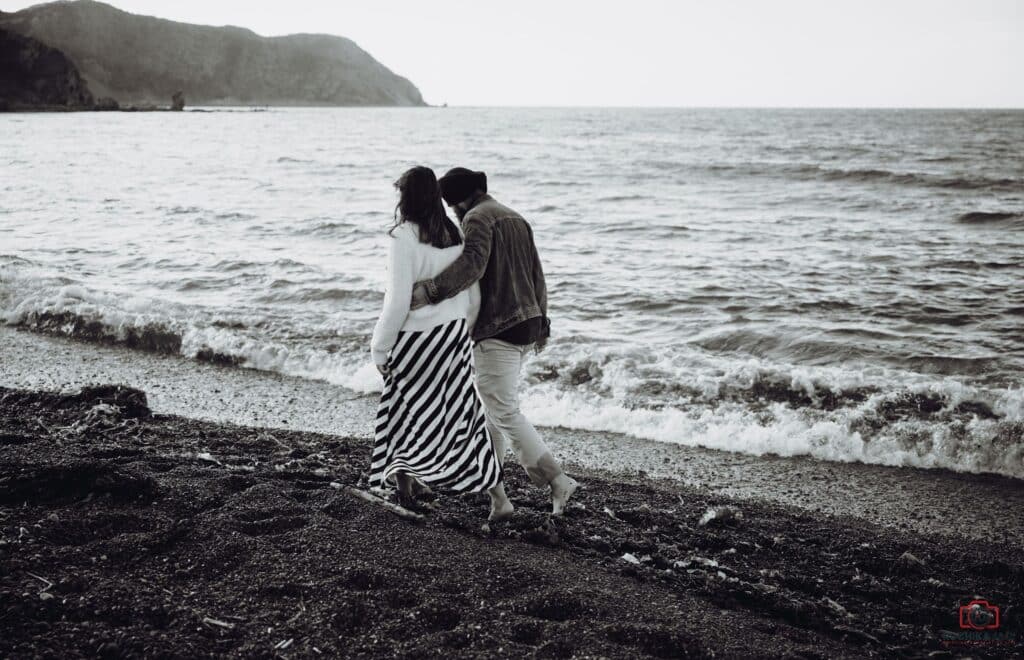
Technical Tips for Amazing Elopement Photos
To support that mood in your images, a few practical photography tips can help:
- Lighting: As noted, soft light is key. Shoot during golden hour (sunrise/sunset) whenever possible. The sky’s colors – pink, orange, purple – can become a beautiful backdrop. If your ceremony or portraits must be midday, find shaded areas (under trees or on north-facing slopes) to avoid harsh shadows.
- Angles & Composition: Embrace creativity. Your photographer might try wide shots to capture you against the landscape, as well as tight shots on hands, faces, and details. Orion Photo Group suggests using the environment to “frame your subjects” – for example, shooting through ferns or framing a kiss with a mountain in the distance. Encourage exploring different perspectives (e.g., lying in the grass, from above, silhouette against light) to keep the album dynamic.
- Details: Don’t forget small moments. A groom adjusting a tie, a bride’s shoes on a trail, or the wedding rings on an heirloom cloth can all add texture to the story. These “detail shots” may not show faces but they set the scene. The Orion guide emphasizes that “the minutiae imbue the photographs with authenticity and emotion”. When getting ready, set aside time for your photographer to capture these at a creative flatlay or candidly.
- Embrace the Weather: A light breeze making the veil fly, or even a quick rain shower, can be dramatic. Don’t be scared of it. Use unexpected moments – a rainbow, fog, or snow – to enhance mood. A dark sky can make moody photos feel mystical, while gentle rain can yield cozy umbrella shots. Just remember to pack hand warmers or a transparent umbrella if there’s a chance of rain.
- Stay Flexible: Sometimes the best shot is the unplanned one. Being open to changing plans (like moving an hour earlier because the light is perfect) leads to magic. Photographers often advise couples to plan a loose timeline and remain ready to seize spontaneous moments.
Example checklist for photo-ready mood:
- Scout your location. Visit it at the planned time of day to note light and backdrop.
- Golden hour goal. Aim for ceremony or portraits at dawn/dusk.
- Pack weather gear. Blankets, jackets, or hot drinks can keep you cozy if it’s cold, adding comfort to photos.
- Coordinate colors. Subtly match your outfits to the environment (e.g., earth tones in a forest, light fabrics by the ocean) to tie the photo palette together.
By aligning timing, light, and angle with your vision, you set the stage for truly amazing elopement photos that reflect the mood you imagined.
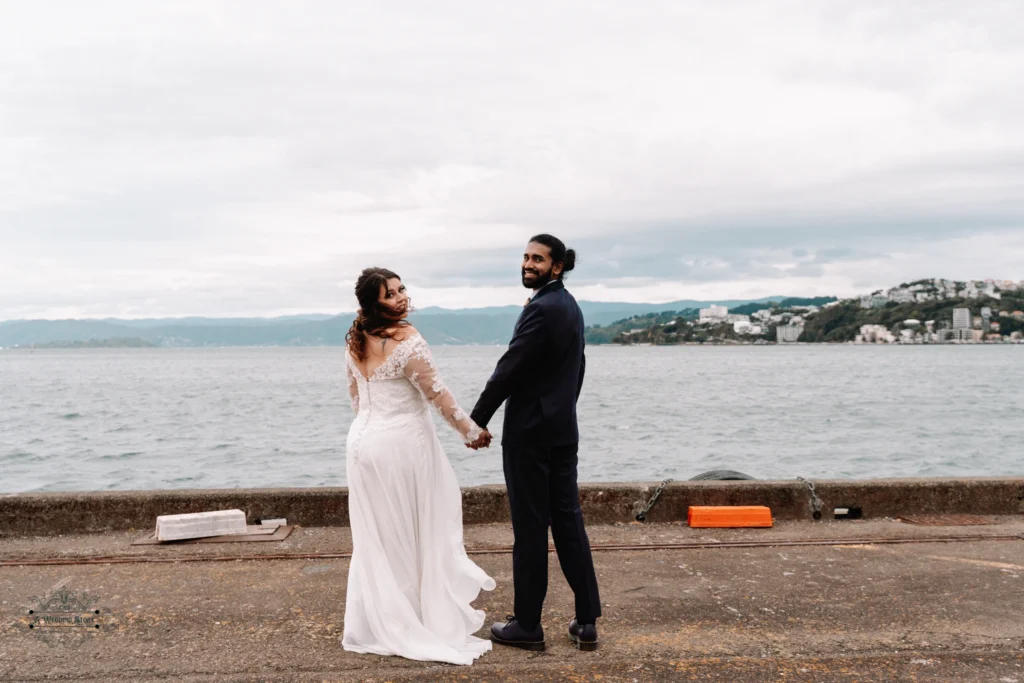
Finding the Right Elopement Photographer
Finally, the photographer you choose is crucial. They’re the ones who will interpret your mood and vision through images. Here are tips for picking the perfect match:
- Style Match: Review portfolios and full galleries (not just highlights). Kelly Szott reminds couples to “make sure you have thoroughly reviewed the photographer’s work” and that their style “lights, use of background, … mood” resonates with you. If you adore warm, candid images, find a photographer whose albums consistently show that feel.
- Experience with Elopements: An elopement isn’t a traditional wedding. It often involves outdoor or unconventional settings, unpredictable weather, and no large party. Choose someone who specializes in or at least has experience with elopement shoots. A pro elopement photographer will know how to stay flexible, work with natural light, and guide you through getting good shots in non-traditional situations.
- Communication and Support: The right photographer does more than shoot – they can actually enhance your day. Kelly Szott describes a “full, incredible experience” where the photographer helps with everything from location ideas and timelines to planning support. When interviewing photographers, ask if they offer planning advice, vendor recommendations, or even a day-of timeline. These extras show they care about your experience, not just their camera fee.
- Value over Lowest Price: This is not the time to cheap out. As Kelly warns, photography is “the only thing you can take with you forever” about your elopement. A highly-rated or slightly higher-priced photographer who delivers a seamless, stress-free experience will likely be worth the investment over a bargain shooter.
- Personal Rapport: You’ll spend a lot of time with your photographer on your big day. Meet (in person or via video) to see if you click. Do they listen to your ideas? Do they make you feel comfortable and understood? A friendly connection will help you relax in front of the camera.
- Ask the Important Questions: For example, how do they handle permits or fees at parks? Will they assist with timelines? Do they shoot in color, film, or black-and-white? Kelly’s checklist of questions – from portfolio to coverage – can guide your selection.
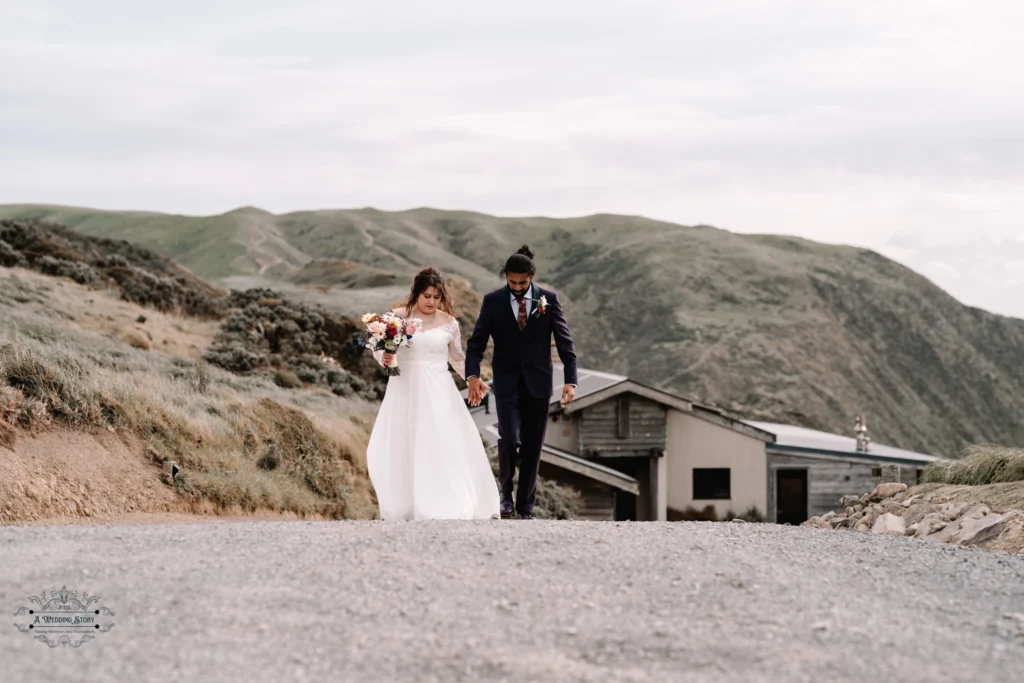
A useful resource is the Wedding Photography Packages Guide to understand what coverage and deliverables to expect. You can also explore an example of a dedicated Wellington wedding & elopement photographer to see a sample portfolio and learn how they craft narratives from genuine moments. Ultimately, trust your instincts: pick the person whose photos you love and whose personality suits you.
At A Wedding Story, we’re passionate about photographing elopements across Wellington and beyond with honesty, elegance, and soul. You don’t need to be a model. You just need to be in love—and we’ll do the rest.

